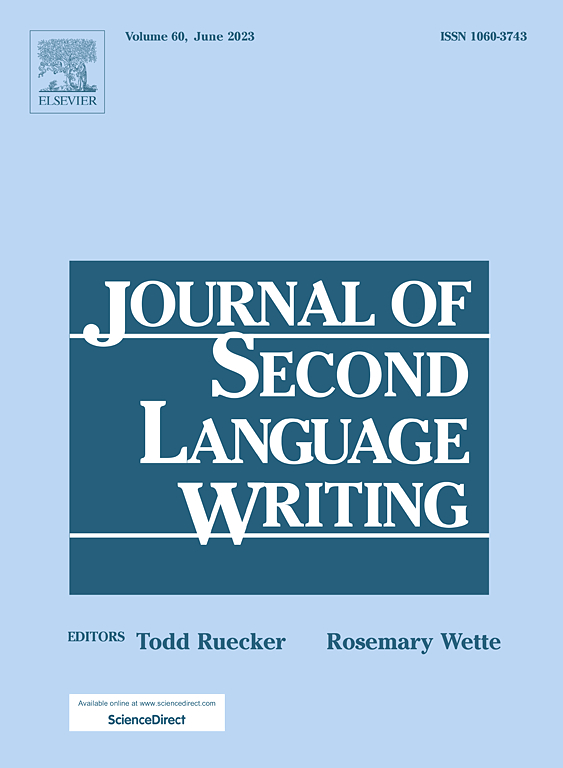A cross-linguistic perspective on the relationship between syntactic complexity and Chinese L2 writing quality
IF 4.5
1区 文学
Q1 LINGUISTICS
引用次数: 0
Abstract
Existing studies have shown that when learners with different L1s learn the L2, their L2 syntactic complexity will show different differences due to the influence of different L1s. However, previous research mainly stays at the macro level of L1 as an influencing factor. In addition, no research has discussed the impact of L1 on the relationship between SC and L2 writing quality. Through a linear mixed-effects model, our study examined whether large-grained and fine-grained indicators predict the quality of learners' Chinese L2 writing differently depending on the learners' L1s. The study found that: (1) The whole model of large-grained indicators explained 51.96 % of the variance (fixed effects: 39.17 %; random effects: 12.65 %). The relationship between the mean length of sentence, mean length of clause, mean length of T-unit, clauses per sentence, T-units per sentence, and dependency distance indicators and scores was moderated by L1s. (2) The whole model of fine-grained indicators explained 59.6 % of the variance (fixed effects: 53.9 %; random effects: 5.4 %). The ratio of subject-verb, adverbial, and coordinate were moderated by the L1 and showed differences between groups. We found that even those indicators that are common across languages may show different effects when predicting scores due to different L1s (subject-verb, adverbial).
句法复杂性与汉语第二语言写作质量关系的跨语言视角
已有研究表明,不同l1的学习者在学习第二语言时,由于不同l1的影响,他们的第二语言句法复杂性会表现出不同的差异。然而,以往的研究主要停留在宏观层面的母语作为影响因素。此外,还没有研究讨论过母语对SC和L2写作质量之间的关系的影响。通过一个线性混合效应模型,我们的研究考察了大粒度和细粒度指标对学习者汉语第二语言写作质量的预测是否因学习者的外语水平而异。研究发现:(1)整个模型的大粒度指标解释了51.96 %的方差(固定效应39.17 %,随机效应12.65 %)。句子平均长度、小句平均长度、t -单位平均长度、句子句数、句子t -单位与依赖距离指标和得分之间的关系被l15调节。(2)整个模型的细粒度指标解释了59.6% %的方差(固定效应53.9% %,随机效应5.4 %)。主谓比、状语比、座标比受L1调节,且组间存在差异。我们发现,即使是那些跨语言通用的指标,在预测分数时也可能由于l15(主谓、状语)的不同而表现出不同的效果。
本文章由计算机程序翻译,如有差异,请以英文原文为准。
求助全文
约1分钟内获得全文
求助全文
来源期刊

Journal of Second Language Writing
LINGUISTICS-
CiteScore
8.80
自引率
13.10%
发文量
50
审稿时长
59 days
期刊介绍:
The Journal of Second Language Writing is devoted to publishing theoretically grounded reports of research and discussions that represent a significant contribution to current understandings of central issues in second and foreign language writing and writing instruction. Some areas of interest are personal characteristics and attitudes of L2 writers, L2 writers'' composing processes, features of L2 writers'' texts, readers'' responses to L2 writing, assessment/evaluation of L2 writing, contexts (cultural, social, political, institutional) for L2 writing, and any other topic clearly relevant to L2 writing theory, research, or instruction.
 求助内容:
求助内容: 应助结果提醒方式:
应助结果提醒方式:


